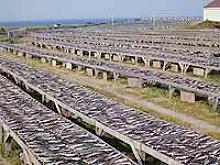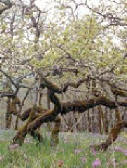|
The Laurentian North population of Atlantic cod, which extends from the northern Gulf of the St-Lawrence to Newfoundland’s south coast, was assessed as threatened by COSEWIC. Cod remain abundant in the eastern part of the region (southern coast of Newfoundland), but have declined substantially in the northern Gulf, where the fishery is now also closed.
The Maritimes population of Atlantic cod remains in the category of special concern.
Two species were down listed to a lower category of risk. The Western North Atlantic population of the humpback whale, previously listed in the special concern category, was removed from the list, due in part to the success of recovery efforts, COSEWIC said.
Fewer humpback whales are becoming entangled in fishing nets, and people have become more proficient at untangling those that are caught. There are now about 10,000 humpback whales in the Western North Atlantic, according to COSEWIC.
The Northwest Atlantic population of the harbor porpoise was also down listed, from threatened, to special concern. COSEWIC said that because of reduced fishing activities in the Atlantic and measures to reduce bycatch in the Bay of Fundy, fewer porpoises are killed accidentally. But concerns remain about potential bycatch levels, and further monitoring is required.
Environment Minister David Anderson said today, “It is troubling whenever the status of any species is moved to a more serious category. However, I am pleased to see the removal of a species from the COSEWIC list and the down listing of another species to a lower category of risk."
"The government of Canada will continue to take action to protect species at risk and their habitats through stewardship and incentive programs with a variety of partners and cooperative efforts with provinces and territories," Anderson said.
Three species of plants found in British Columbia’s Garry oak ecosystems
were added to the list of endangered species.
The Howell’s Triteleia, the Coastal Scouler’s Catchfly and the
Kellogg’s Rush were all found to be endangered.
|


